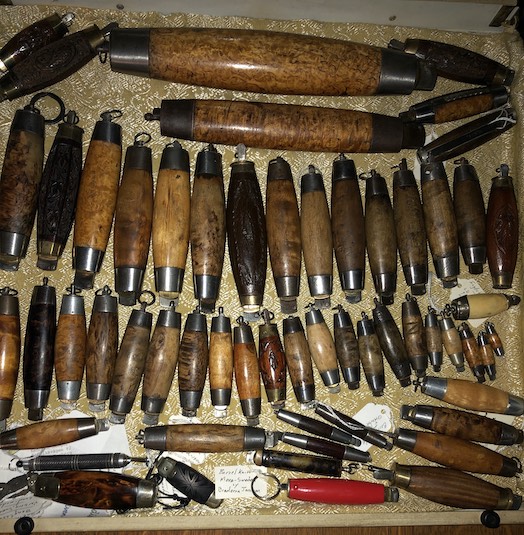- Joined
- Apr 21, 2007
- Messages
- 1,686
It works like Ebay so it's up to the seller.Mikael
Not familiar with Tradera.Will give it a look. Do they sell/ship to US?
Thanks for the info.
Rich
Regards
Mikael
The BladeForums.com 2024 Traditional Knife is available! Price is $250 ea (shipped within CONUS).
Order here: https://www.bladeforums.com/help/2024-traditional/
It works like Ebay so it's up to the seller.Mikael
Not familiar with Tradera.Will give it a look. Do they sell/ship to US?
Thanks for the info.
Rich
Laminated steel - disadvantage is brittle core which could chip during chopping, or tip which could break off easily. I know a guy who chipped his Fallkniven F1 on first use. And more people on here have told me it's a thing with Fallkniven.
Laminated steel - disadvantage is brittle core which could chip during chopping, or tip which could break off easily. I know a guy who chipped his Fallkniven F1 on first use. And more people on here have told me it's a thing with Fallkniven.
You are missing the core concept of laminated steel. It has a hard core which holds an edge well, but may be "brittle". The core is sandwiched by layers that are not prone to breaking.
That's the whole point.
Especially since not only does the softer cladding support that delicate core, but making that core thinner makes it tougher, as well.
Exactly. Smiling's claim is like saying the disadvantage of hamburgers is that they are hot and juicy. Bun, dude.
Yeah. The oft-neglected bun... some folk just can't appreciate it for what it is/does.
Yes the shipping is an obstacle, when buying from overseas.Mikael
Checked out Tradera. Their English version is still in trial stage and my Swedish is non-existent :-(
The pics did show some nice knives, prices ?, maybe a bit high with US shipping. Will check back on them
from time to time. Thanks.
BTW, my wife collects Swedish barrel knives; nice collection.
Rich
I've even heard that an anaconda don't want none unless it got buns (hun).

My statement was that the edge could and often is chippy when it comes to laminated blades, not that entire knife is fragile. Soft steel does help when it comes to shock from impact, but the part of the edge itself will still get a chip if that steel is fragile.
My statement was that the edge could and often is chippy when it comes to laminated blades, not that entire knife is fragile. Soft steel does help when it comes to shock from impact, but the part of the edge itself will still get a chip if that steel is fragile.
Mikael
I don't yet have a pic of her collection. About 40 I would guess including some rare ones ranging from 1 inch barrel to a 9 inch one. She has most Swedish (Eskiltuna), but also Norwegian, Mora Sweden (rare), England, Indian copies, and what I think is a Chinese one (at least it has Chinese characters on the tang.
I'll try to get a pic of her collection.
Rich
Edit:Got a pic of her collection (none laminated or damascus).

Fallknivens have been known to chip on first use (a quick stropping prevents it).
My statement was that the edge could and often is chippy when it comes to laminated blades, not that entire knife is fragile. Soft steel does help when it comes to shock from impact, but the part of the edge itself will still get a chip if that steel is fragile.
42,It may still be fragile (or may not be, depending on steel and heat treatment) but reducing the thickness of the core steel does make it more able to bend or flex without cracking, chipping, or snapping.

I run into it VERY often with vintage American scythe blades. Many were made using very thin, laminated construction, and a common indicator that a blade is a laminated one is when you find it bent and twisted like a noodle.They can almost always be bent back cold without experiencing cracking, and yet tend to have edges that are harder than their whole-steel counterparts. Whole steel blades tend to be more resistant to taking a set, but also softer in the edge (though still quite hard) and it's much more common to encounter a cracked whole steel blade than it is to find a laminated one that has met the same fate.
